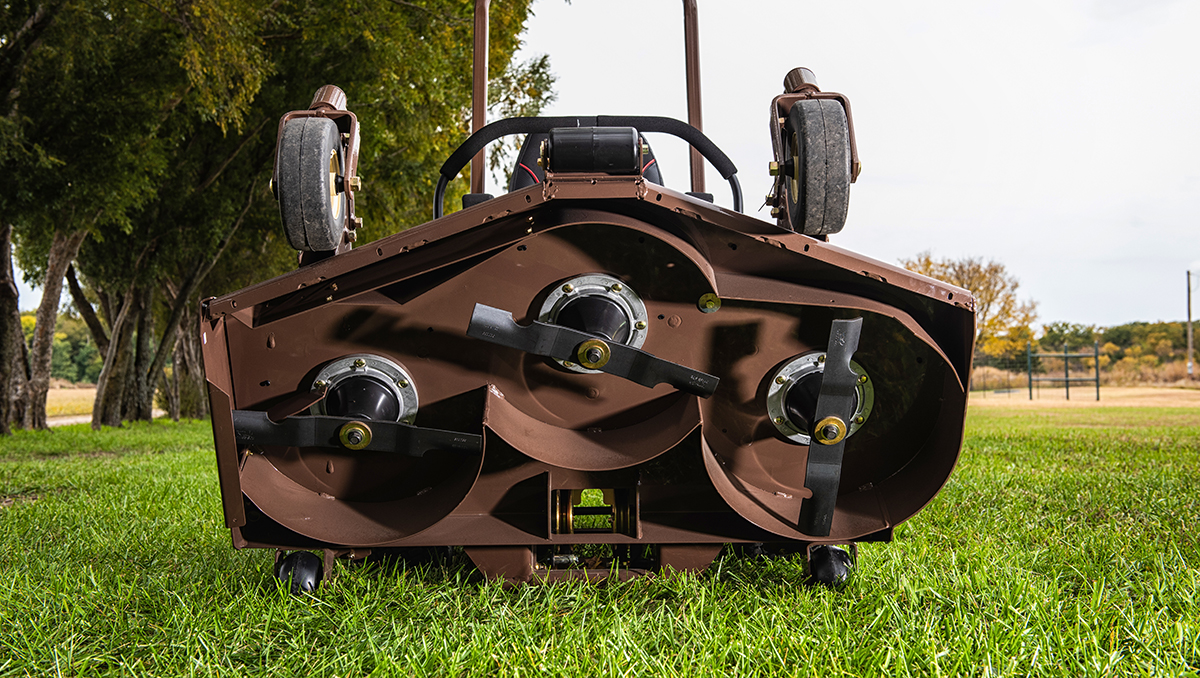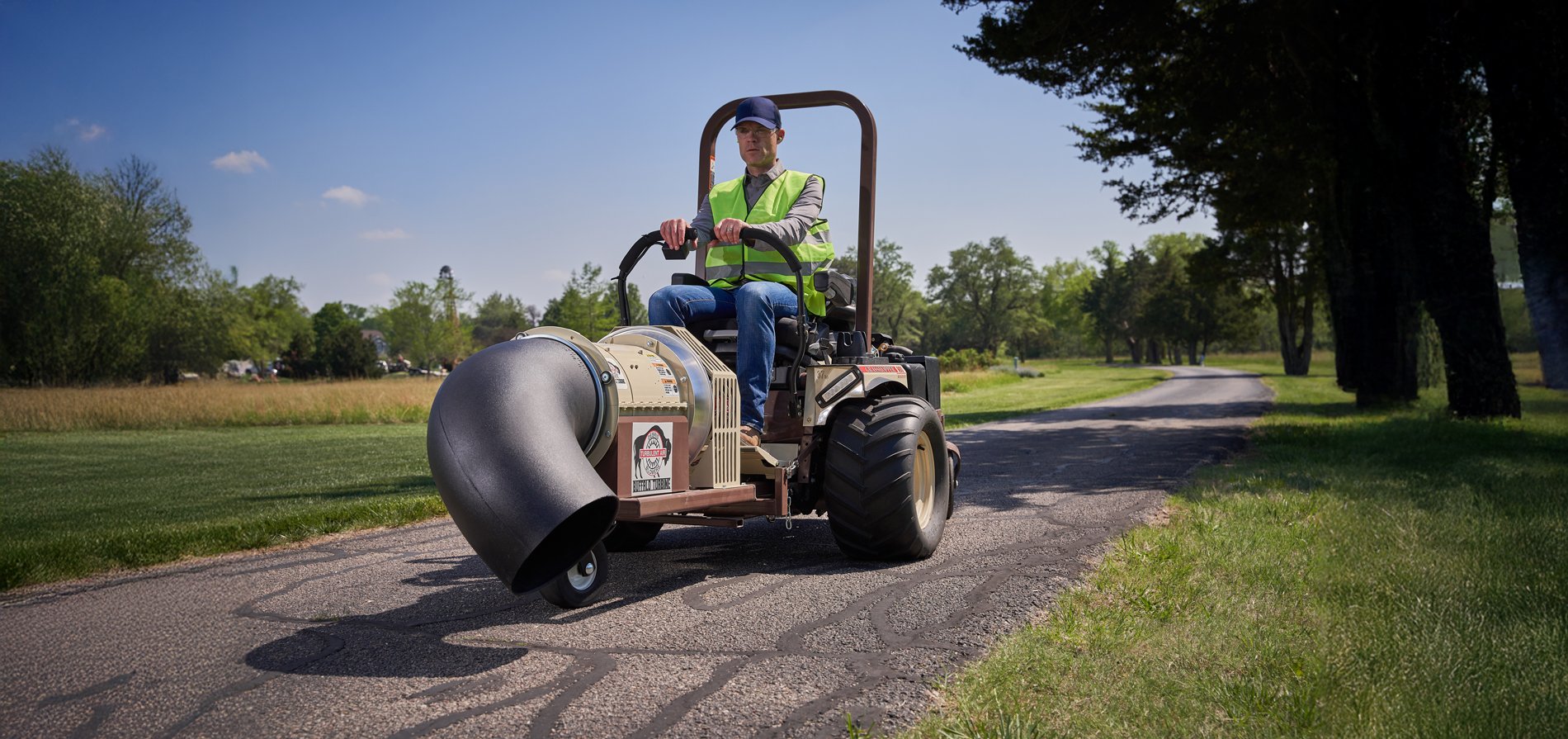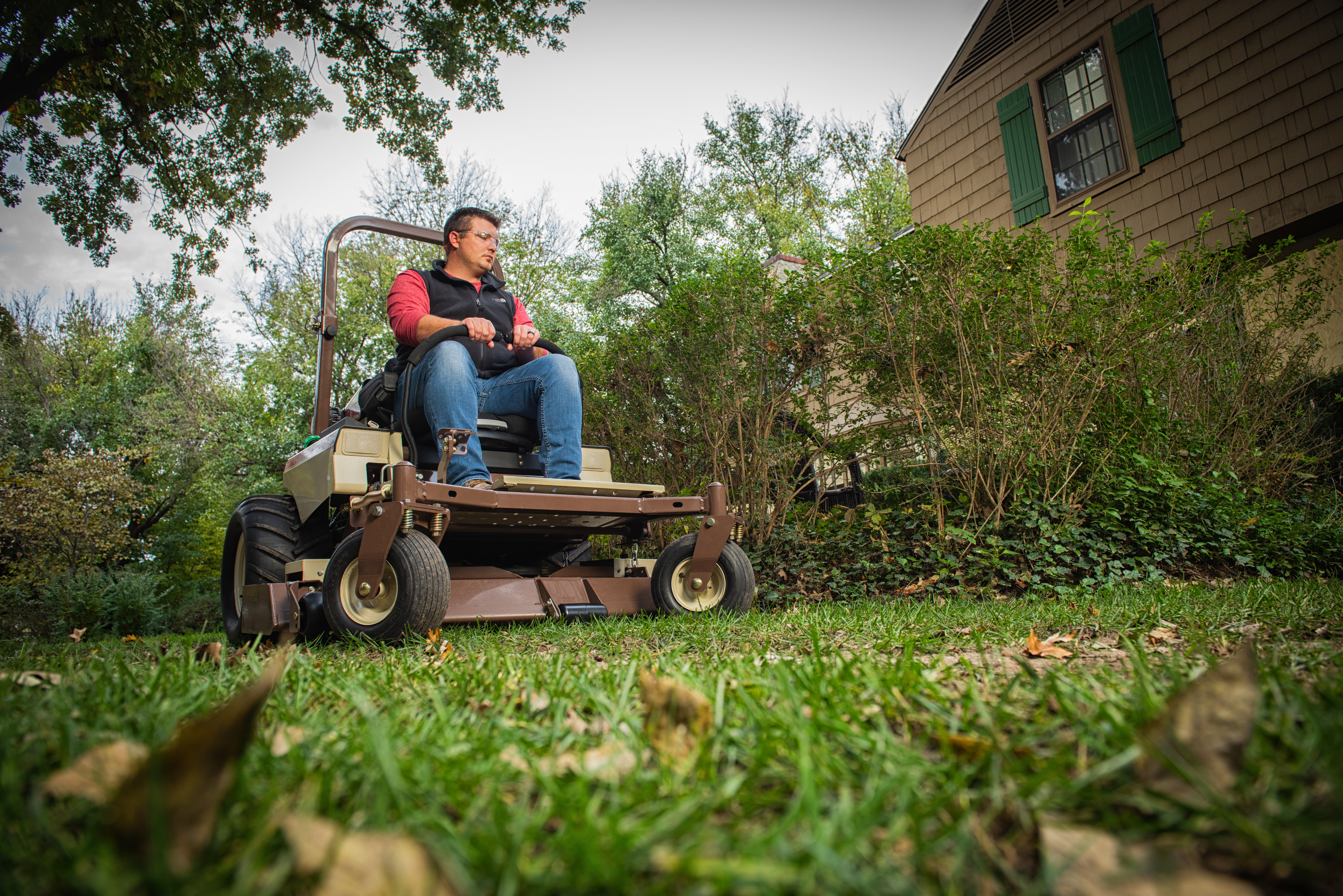The only thing that beats the smell of freshly cut grass is the breathtaking appearance of a perfectly striped lawn. It’s the kind of thing you see on TV while watching a baseball game. With a well-designed mower and good mowing technique, it’s the kind of thing you can see on your own lawn, too.
One piece of equipment a stadium grounds crew often uses is a lawn roller. Attaching to the back of a sports field mower, a roller pushes the grass down after the mower blades cut it. These roller attachments, often marketed as lawn striping kits, are available for regular lawnmowers, as well, including zero-turns and lawn tractors.
But do you really need a striping kit to create nice stripes in a regular lawn?
Think about what those lawn striping attachments do. They flatten grass down. Why does that matter? Lawn striping is nothing more than a visual effect caused by reflecting light. Grass bent toward you looks darker, while grass bent away from you looks lighter. When adjacent to one another, you get this alternating dark/light appearance that looks like stripes.
Given the science behind striping, you can see how a striping kit can certainly help. By flattening the grass down a bit more, that dark/light contrast can become more pronounced. But you can still make nice stripes without a lawn roller—as long as you adhere to a few key principles of effective mowing.
When The Grass Is Long, The Stripes Look Strong
Grass length is the most important aspect of producing spectacular stripes in an everyday lawn. Longer grass bends over easier and reflects light better. That’s one reason why stadium grounds crews often rely on lawn rollers. Stadium crews typically maintain grass to a shorter height, so they need that extra flattening assistance to get a more dramatic dark/light contrast in the grass. But when you have a lush lawn that is mowed to a taller height, the mower deck is all it takes to sufficiently push those grass blades over.
So, if you are hoping to see better stripes on the lawn you mow, the best thing you can do is raise your mower deck to the proper height. Recommended grass lengths are:
- Tall Fescue 4”
- Bluegrass 3.5”
- Ryegrass 2.5”
- St. Augustine 4”
- Zoysia 2.5”
- Bermuda 2.5”
Grasshopper mowers make it easy to adjust your deck height. FrontMount™ decks feature Grasshopper’s exclusive PowerFold® technology, which includes electric height adjustment so operators can raise/lower cutting height with a simple flip of a switch. MidMount™ decks have a QuikAjust™ Drop Pin Height Adjustment which is also fast and easy to use.
Some Grasses Stripe Better Than Others
Once you get your grass set to the proper length, it’s entirely possible that you’ll be able to produce excellent stripes without the need for a striping kit. Of course, other factors will also come into play.
Lush, healthy turf grass that isn’t overrun by weeds is key. Other proper lawn care cultural practices, such as sufficient irrigation and fertilization, also play a role in the overall health and appearance (color) of your turfgrass. Additional cultural practices like aerating, dethatching and overseeding may also be required from time to time to help maintain a lush lawn.
It’s also important to realize that certain grass species tend to stripe better than others. Generally speaking, lawn striping is better suited to northern “cool-season” grasses. That’s because cool-season grasses such as Tall Fescue, Bluegrass and Ryegrass are finer and can bend easier. Southern “warm-season” grasses like St. Augustine, Zoysia and Bermuda are heartier and don’t bend as easily. Zoysia and Bermuda are also maintained to a shorter length. Thus, it’s harder to create pronounced stripes in those types of lawns. That doesn’t mean striping is impossible, it’s just that the stripes likely won’t look as dramatic.
Other Mowing Techniques That Help With Striping
Spectacular stripes and a healthy lawn go hand in hand. To that point, another key to effective striping is adhering to some additional basic mowing best practices.
One is the “1/3 Rule,” which means you should never remove more than one-third of the grass blade during a single mowing. Taking that principle into consideration, the following grass types should be mowed when they reach the following height:
- Tall Fescue 6"
- Bluegrass 5.25"
- Ryegrass 4"
- St. Augustine 6"
- Zoysia 4"
- Bermuda 4"
It’s also important to maintain sharp blades so the grass can be cut cleanly. Dull blades can tear the grass, leading to a dull appearance and opening the door to disease. As a general rule, blades should be sharpened at least every 25 hours of mowing. Every 8-12 hours would be even better. Inspect your blades regularly to look for dings and damage, which would require the blades to be replaced.
Also keep the underside of the deck free from an over accumulation of grass clippings. Too much buildup can restrict airflow and impact cut quality.
Use A Mower With Superior Cut Quality
Speaking of cut quality, the appearance of your lawn stripes will also be impacted by the quality of the mower you’re using.
Grasshopper mowers feature extra-deep DuraMax® decks which create a high volume of airflow. That helps stand the grass up straighter so it can be cut more evenly.
Grasshopper also offers its GrassMax™ blade system for optimum airflow, minimal grass buildup, and a superior cut.
Different blade styles are available for different cutting scenarios, such as mulching, bagging, discharging, moist conditions, dry conditions, etc. Blade style can really make a difference with cut quality. And cut quality—along with grass length and overall grass health—will really make a difference in the appearance of those lawn stripes you’re so eager to show off.





